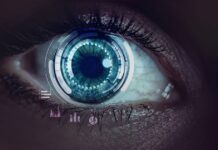Artificial intelligence (AI) is playing a more and bigger part in cybersecurity as technology develops. Still, can artificial intelligence (AI) really take the role of human intelligence in protecting our digital world? Let’s examine the particulars and discover why effective cybersecurity demands the cooperation of AI and human skills.
Human Factor: Vulnerabilities & Expertise
The human factor remains both a critical asset and a potential vulnerability. While organizations deploy sophisticated defenses against cyber threats, attackers continually refine their tactics to exploit more vulnerable targets: humans. Let’s explore the intricacies of this delicate balance:

- Phishing Attacks: Cybercriminals exploit human vulnerabilities through cleverly crafted phishing emails. Even the most sophisticated AI defenses can’t fully prevent users from falling victim to these attacks.
- Social Engineering: AI may detect anomalies, but understanding context and intent requires human intuition. Social engineering attacks often manipulate human emotions, making them challenging to predict solely with AI.
- Behavioral Analysis: Human analysts excel at recognizing behavioral patterns. They can identify subtle deviations that automated systems might miss.
- Insider Threats: Human intuition plays a crucial role in detecting insider threats. Understanding employee behavior and identifying potential risks require human judgment.
Limitation of AI in Cybersecurity
Despite the promise of artificial intelligence (AI) in bolstering cybersecurity, it’s essential to recognize its limitations. AI systems, while powerful, are not infallible. Let’s explore some of the challenges associated with AI in cybersecurity:

- AI Bias: AI systems can easily detect threats, but they inherit biases from their training data. Cultural biases or language limitations can impact their effectiveness.
- Training Time: AI models take time to learn and adapt. Outdated AI might miss new threats, emphasizing the need for human oversight.
- Over-reliance: Relying solely on AI can lead to false positives (flagging harmless activities as threats) or false negatives (missing actual threats).
- Human Judgment: Human analysts validate AI outputs, ensuring accurate decisions and minimizing false alarms.
Finding Synergy With AI and Human Collaboration
In the dynamic realm of cybersecurity, the convergence of artificial intelligence (AI) and human expertise holds immense promise. Let’s explore how this collaboration enhances our defenses:

- AI Efficiency: AI automates repetitive tasks, allowing human analysts to focus on strategic initiatives.
- Threat Detection: AI can quickly analyze vast amounts of data, identifying potential threats faster than manual methods.
- Context Matters: AI lacks contextual understanding. Human analysts provide critical context, interpreting complex situations.
- Ethical Considerations: AI decisions need human oversight to prevent unintended consequences or biased outcomes.
Even if AI improves our abilities, human judgment is still invaluable in the intricate field of cybersecurity. A strong protection against cyberattacks is ensured by carefully balancing AI and human knowledge. In order to protect our digital future, let’s embrace teamwork and make the most of both artificial intelligence and human intelligence.
Stay tuned for more tech insights like these; this is your favorite, friendly neighborhood techie, Zayaan, Signing Off!







































